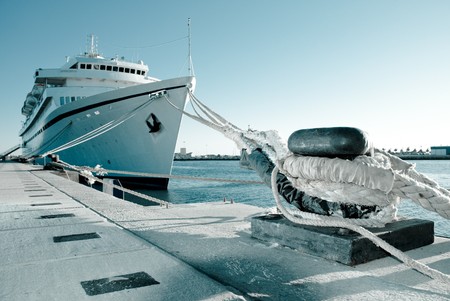Understanding Emergency Evacuation on Cruises
When we think about cruises, we usually imagine relaxing days at sea, amazing food, and exciting destinations. But as beginner travelers (like me!), it’s important to understand what could happen if an emergency strikes while you’re far from shore. Emergency evacuation on cruises means safely getting passengers and crew off the ship in the event of a serious incident—think fires, medical emergencies, or even severe weather. Unlike being on land where ambulances and hospitals are nearby, cruise ships face unique challenges. For example, if someone has a medical crisis in the middle of the ocean, evacuation might involve helicopters or rescue boats, and coordination with coast guards or local authorities. There have been real-life situations where storms forced ships to reroute quickly, or passengers needed urgent airlifts to hospitals hundreds of miles away. The process can be complicated by language barriers in foreign ports, limited onboard medical resources, or rough seas that make evacuation risky. That’s why understanding how emergency evacuation works—and what your insurance covers—is absolutely essential before you set sail.
2. What Is Repatriation and Why It Matters
When you hear the term “repatriation,” it might sound complicated, but its actually a crucial concept for any American planning to travel abroad, especially on a cruise. In simple terms, repatriation means returning someone to their home country. In the context of travel insurance, it usually refers to arranging and covering the costs to bring you back home if you become seriously ill or injured while overseas—or, in rare cases, after death. This is very different from regular medical evacuation, which typically only gets you to the nearest suitable hospital.
For Americans on a cruise, repatriation can be even more important than you might think. Cruises often visit multiple countries and remote locations where local healthcare may not meet U.S. standards. If you have a serious medical emergency, you might need to be transported back to the United States for further treatment or recovery.
When Might Repatriation Be Needed on a Cruise?
| Situation | Example | Why Repatriation Is Important |
|---|---|---|
| Serious Illness | You develop severe pneumonia and need extended hospitalization. | Local facilities may not offer advanced care; returning home allows access to your doctors and support system. |
| Major Injury | You suffer a broken leg during an excursion and require surgery. | If local hospitals lack expertise or resources, repatriation gets you home safely for proper treatment. |
| Unexpected Death | A passenger passes away due to natural causes. | The insurance covers transporting remains back to the U.S., easing stress for loved ones. |
Key Reasons Repatriation Matters for Americans Abroad
- High Costs: Without coverage, arranging medical flights or transporting remains can cost tens of thousands of dollars out-of-pocket.
- Lack of Local Resources: Not all destinations have the facilities or expertise needed for complex medical situations.
- Bureaucratic Challenges: Navigating international paperwork and logistics can be overwhelming—insurance companies can handle these details for you.
Cultural Note: U.S. Healthcare Preferences
Many Americans prefer treatment at home due to familiarity with doctors, language comfort, and proximity to family. Repatriation ensures this possibility in case something goes wrong during your cruise adventure.

3. Common Cruise Emergencies that Trigger Evacuation or Repatriation
When we’re talking about emergency evacuation and repatriation on cruises, it’s important to understand what kinds of situations actually set these processes in motion. Cruises are meant to be fun and relaxing, but unexpected events can happen, and knowing what might require an urgent response helps us prepare—especially when it comes to choosing the right insurance coverage.
Medical Emergencies at Sea
One of the most common reasons for emergency evacuation from a cruise ship is a sudden medical issue. This could be anything from a heart attack, stroke, or severe allergic reaction, to injuries caused by falls or accidents on board. Since cruise ships are often far from land and advanced medical facilities, serious cases might need an airlift or special boat transfer to the nearest hospital. The cost for this kind of evacuation can be sky-high, which is why having the right insurance is critical.
Natural Disasters and Severe Weather
Another big trigger for emergency evacuation or even repatriation is extreme weather or natural disasters. Hurricanes, tropical storms, or unexpected rough seas can quickly turn a dream vacation into a challenging situation. In rare cases, cruises may need to divert, delay, or evacuate passengers altogether for everyone’s safety. Again, travel insurance with evacuation coverage makes sure you won’t be stuck with a massive bill if nature decides to take a dramatic turn.
Other Unplanned Events
While medical issues and bad weather are the main culprits, other emergencies can also pop up. These include things like onboard fires, mechanical breakdowns that make the ship uninhabitable, or even political unrest at certain ports of call. Any event that puts passengers’ health or safety at risk could result in either an evacuation to the nearest safe location or repatriation back home.
The Bottom Line
No one likes to imagine their cruise going off course because of an emergency. But knowing what types of events can lead to evacuation or repatriation—and making sure your travel insurance covers them—can give you peace of mind before you set sail. Being prepared isn’t just smart; it’s essential for protecting yourself and your travel investment.
4. How Insurance Covers Emergency Evacuation and Repatriation
If you’re new to cruising or travel insurance, it can be confusing to understand exactly how your policy helps during a real emergency at sea. Here’s a breakdown of what standard travel insurance usually covers when it comes to emergency evacuation and repatriation.
Coverage Limits: What’s Included?
Most standard travel insurance policies offer coverage for both emergency medical evacuation and repatriation, but the amount they will pay can vary widely. It’s really important to check your policy for these details before you set sail.
| Coverage Type | Typical Limit (per person) | What It Means |
|---|---|---|
| Emergency Medical Evacuation | $100,000 – $1,000,000 | Covers transportation to the nearest hospital or appropriate facility if you’re seriously ill or injured on board. |
| Repatriation of Remains | $25,000 – $250,000 | Pays for returning your body home if you pass away during your trip. It can also cover return travel for family members in some cases. |
| Non-Medical Evacuation | $25,000 – $100,000 | Covers evacuation due to natural disasters or political unrest—not just medical emergencies. |
Steps Required for Coverage
To get these benefits, most insurance companies require you to follow certain steps. These are pretty standard across the industry:
- Contact the Insurer ASAP: Always call your insurance provider’s emergency hotline before arranging any evacuation—they often need to pre-approve services.
- Use Approved Providers: The insurer might have preferred air ambulance or transport services you’ll need to use for coverage to apply.
- Provide Documentation: Be ready with medical reports, receipts, and proof that the evacuation was necessary according to a qualified physician.
Common Exclusions You Should Know About
No one likes surprises—especially when it comes to insurance! Here are some common exclusions where your policy might not pay out:
- Pre-existing Conditions: If your emergency is related to a health issue you had before buying the policy (unless you purchased a waiver).
- High-Risk Activities: Injuries from activities like skydiving or scuba diving may not be covered unless you buy extra protection.
- No Pre-Approval: If you don’t contact your insurer before making arrangements, they could deny your claim.
- Cruise Line Responsibility: Some medical costs might be covered by the cruise line itself—insurance usually pays what’s left after those benefits are used.
Your Takeaway as a New Cruiser
If this all sounds overwhelming, don’t worry—you’re not alone! Just remember: check your policy limits, know who to call in an emergency, and keep copies of everything. Taking these steps means if something goes wrong during your cruise, you’ll be prepared and supported by your travel insurance.
5. Choosing the Right Insurance for Your Cruise
When planning a cruise, especially if you’re an American traveler, picking the right insurance can be as important as choosing your destination. Emergency evacuation and repatriation coverage are not always included in standard policies, so it’s essential to select a plan that truly fits your needs. Here are some practical tips to help you choose wisely:
Focus on Reputable Providers
Start by looking at well-known insurance companies with strong reputations in the U.S. travel market. Brands like Allianz, Travel Guard, and Travelex are popular among American cruisers because they offer 24/7 emergency assistance and have proven experience handling cruise emergencies. Always check reviews from fellow travelers and consult resources like the Better Business Bureau or Trustpilot for peace of mind.
Key Questions to Ask Before Buying
1. Does the policy specifically cover emergency medical evacuation from a cruise ship?
2. Are costs for repatriation (bringing you home in a medical emergency) fully covered?
3. What is the maximum coverage limit for evacuation and repatriation?
4. Will the insurer coordinate directly with cruise line staff and local authorities?
5. Is pre-existing condition coverage available if you need it?
Don’t be afraid to call customer service and ask these questions before buying your policy. A reputable provider should answer clearly and in detail.
Consider American Cruise Habits
Americans often book cruises to the Caribbean, Alaska, or Europe—regions where onboard medical care may be basic and shore-based hospitals might be far away. Make sure your policy covers air ambulance transport, which can cost tens of thousands of dollars without insurance. Also, since Americans typically prefer convenience, look for plans offering mobile apps or online claim filing for faster assistance if something goes wrong during your trip.
Extra Tip: Read the Fine Print
Cruise insurance can be tricky. Always read the policy details carefully; some plans exclude certain destinations or activities (like shore excursions or scuba diving). Double-check what’s included so there are no surprises if you ever need help abroad.
6. Practical Steps to Take if an Emergency Strikes
Finding yourself in an emergency situation on a cruise can be overwhelming, especially if you’re far from home. Having the right information and knowing what steps to take can make a huge difference. Here’s some actionable advice for handling emergencies at sea, including what details you should have handy and how to effectively coordinate with both cruise staff and your insurance provider.
Be Prepared with Essential Information
Before your trip even begins, keep a copy of your travel insurance policy (either digital or printed), your passport, emergency contact list, and any medical documents you may need. Make sure these are easily accessible in your cabin safe or a secure travel pouch. It’s also smart to save your insurer’s 24/7 emergency hotline number in your phone and share it with a travel companion just in case.
Follow Crew Instructions Immediately
If an emergency happens onboard—like a medical issue or evacuation alert—the first thing to do is stay calm and listen to announcements from the ship’s crew. Cruise staff are trained for emergencies and will guide you to safety or the medical center as needed. Don’t try to handle things alone; following official instructions is key to keeping yourself and others safe.
Contact Your Insurance Provider ASAP
If the situation involves injury, illness, or evacuation, reach out to your insurance company as soon as possible. They can guide you on approved medical facilities, next steps for repatriation, and help coordinate payments. Provide them with all relevant details: your policy number, location, nature of the emergency, and contact info for anyone helping you onboard.
Document Everything
Keep detailed notes about what happened—including times, locations, who you spoke with, and copies of any paperwork like medical bills or evacuation forms. This documentation will be crucial when filing an insurance claim after the incident.
Coordinate with Both Staff and Insurers
The cruise staff will often liaise directly with medical professionals and transport teams, but make sure your insurer is in the loop before agreeing to costly treatments or transfers whenever possible. If language barriers arise, ask for assistance from onboard translators or guest services.
After the Emergency: Next Steps
Once the immediate danger has passed, work closely with both your insurer and cruise representatives to arrange follow-up care or transportation home if necessary. Keep records of all communication and receipts for reimbursement purposes. Remember: being proactive, organized, and communicative gives you the best shot at a smooth recovery—and helps maximize your insurance benefits during a stressful time.

